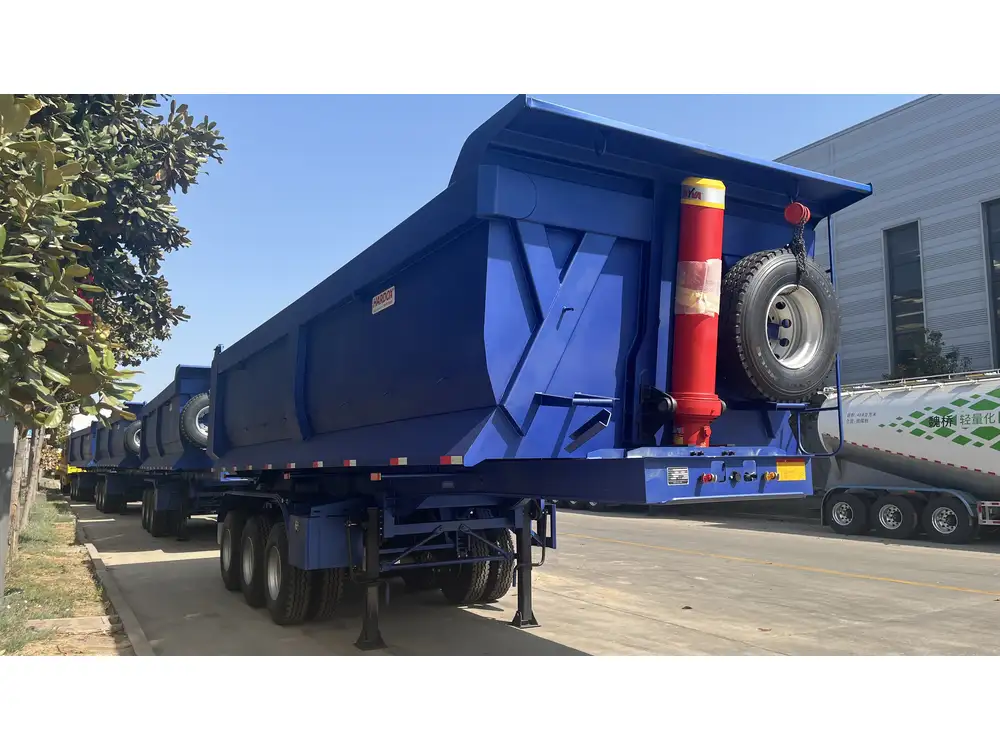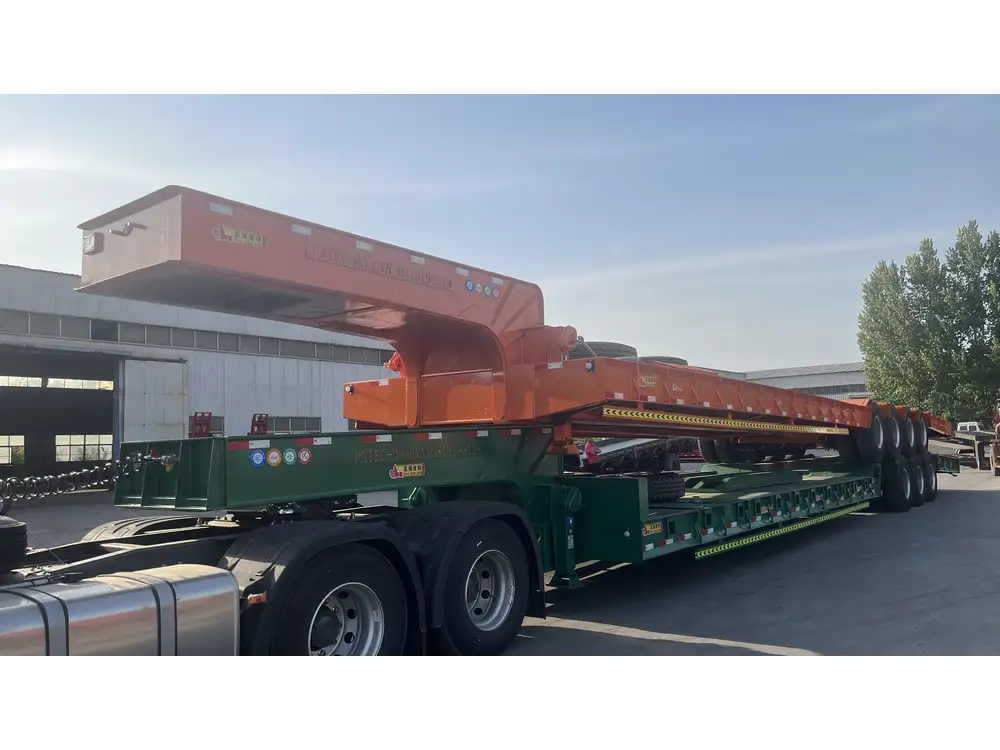Removing an Arbosul liner from a tank trailer might seem daunting at first glance, but with the right techniques and tools, it can be accomplished efficiently and safely. In this detailed guide, we will break down the process into manageable steps, helping you tackle this task with confidence.
Understanding the Arbosul Liner
What is an Arbosul Liner?
An Arbosul liner is a specialized protective coating used in tank trailers to ensure the integrity of the tank, prevent corrosion, and facilitate the safe transport of various substances. Whether it’s a chemical, food-grade liquid, or fuel, the liner serves as a critical barrier between the cargo and the trailer, maintaining quality and safety standards.

Importance of Proper Removal
Removing a worn or damaged liner is essential to maintain the functionality and safety of the tank trailer. Failure to properly remove the liner can lead to contamination, corrosion, and potential risk during transport. Thus, understanding the techniques for effective removal is paramount.
Safety Precautions Before You Begin
Personal Protective Equipment (PPE)
Before initiating the removal process, it’s crucial to equip yourself with appropriate personal protective equipment including:
- Gloves: Nitrile or rubber gloves to protect your hands from chemicals.
- Goggles: Safety goggles to shield your eyes from debris or splashes.
- Respirator: If you are working in an enclosed space or with potentially hazardous materials, a respirator is recommended.

Ensuring a Safe Work Environment
- Adequate Ventilation: Ensure the area is well-ventilated to disperse any fumes.
- Clean Workspace: Keep your workstation organized and clutter-free to minimize hazards.
- Emergency Procedures: Familiarize yourself with emergency protocols in case of chemical spills or other accidents.
Tools Required for the Job
To successfully remove an Arbosul liner from a tank trailer, you will need the following tools:
| Tool | Purpose |
|---|---|
| Heat Gun | Softens the liner for easier removal |
| Scraper | Removes loose liner material |
| Solvent | Aids in dissolving adhesive residues |
| Paintbrush | For applying solvents or chemicals |
| Utility Knife | For cutting away sections of the liner |
| Ladder | If additional height is needed to reach the liner |
| Vacuum | For cleaning debris post-removal |
| Rags or Cloth | For wiping down surfaces |
Step-by-Step Process to Remove an Arbosul Liner

Step 1: Preparation
Inspect the Liner
Before starting, conduct a thorough inspection of the liner. Look for signs of wear, damage, or peeling. This assessment will guide you on how to approach the removal.
Clear the Area
Ensure that all unnecessary items are moved away from the workspace. This minimizes the risk of accidents and allows easy access to the tank trailer.

Step 2: Heating the Liner
Using a heat gun, carefully apply heat to the surface area of the Arbosul liner. This softens the material, making it easier to peel away.
- Tip: Maintain a distance of about 6-12 inches from the liner to prevent overheating or burning.
Step 3: Peeling the Liner
Once the liner has softened, utilize a utility knife or scraper to begin peeling it away from the surface.
- Start at one corner and work your way across, applying more heat as necessary to sections that remain stubborn.
- Caution: Avoid digging too deeply with the scraper to prevent damaging the tank trailer’s surface.
Step 4: Removing Residual Adhesive
After the liner has been removed, you will likely encounter adhesive residue. Apply an appropriate solvent to the regions with adhesive. Use a paintbrush to ensure even application.
- Allow the solvent to penetrate the adhesive for a few minutes.
- Gently scrape away the softened residue with your scraper.

Step 5: Final Cleaning
Once the adhesive has been removed, use a vacuum to clean up the debris. Wipe down the affected areas with a damp cloth or rag to remove any remaining solvent or particles.
Step 6: Inspect the Tank
After the removal process, inspect the tank internally for any signs of corrosion, damage, or residues left from the cargo. Address any issues accordingly before re-lining or using the tank trailer.
Common Challenges and Solutions

Challenge 1: Stubborn Sections of the Liner
Solution: If certain sections of the liner are particularly resistant, reapply heat and ensure you move slowly, allowing the material to adequately soften.
Challenge 2: Adhesive Not Lifting Easily
Solution: Increase the dwell time of the solvent on the adhesive. If necessary, repeat the application several times and use a scraping motion rather than forceful rubbing.
Frequently Asked Questions

How long does the entire removal process take?
The duration of the removal process can vary depending on the size and condition of the liner. Generally, expect to budget a few hours for the entire procedure.
Can this process be done solo, or do I need assistance?
While it’s possible to complete this task solo, having an extra pair of hands can be beneficial, especially when dealing with larger sections of the liner.
How should I dispose of the removed materials?
Follow local regulations for hazardous waste disposal, especially if the liner or adhesive contains potentially harmful substances.

What should I do if I encounter corrosion during the inspection?
If corrosion is discovered, assess the extent of the damage. Minor corrosion can often be treated with appropriate sealants or coatings, while severe cases may require professional intervention.
Is it necessary to re-line immediately after removal?
While it is not strictly necessary, re-lining promptly after removal is recommended to ensure the tank trailer’s continued safety and functionality.
Conclusion
The task of removing an Arbosul liner from a tank trailer, while challenging, can be executed effectively with proper preparation, the right tools, and a systematic approach. By following the steps outlined in this guide, you’ll not only enhance the safety of your tank trailer but also ensure it remains compliant with transportation standards.
Taking pride in the maintenance and upkeep of your trailers will undoubtedly pay dividends, enhancing your operational efficiency and safety standards in the long run. Whether you’re preparing to re-line your tank trailer or simply ensuring it is free of hazardous materials, taking the time to perform the removal correctly is vital to maintaining a high standard of safety and performance.



